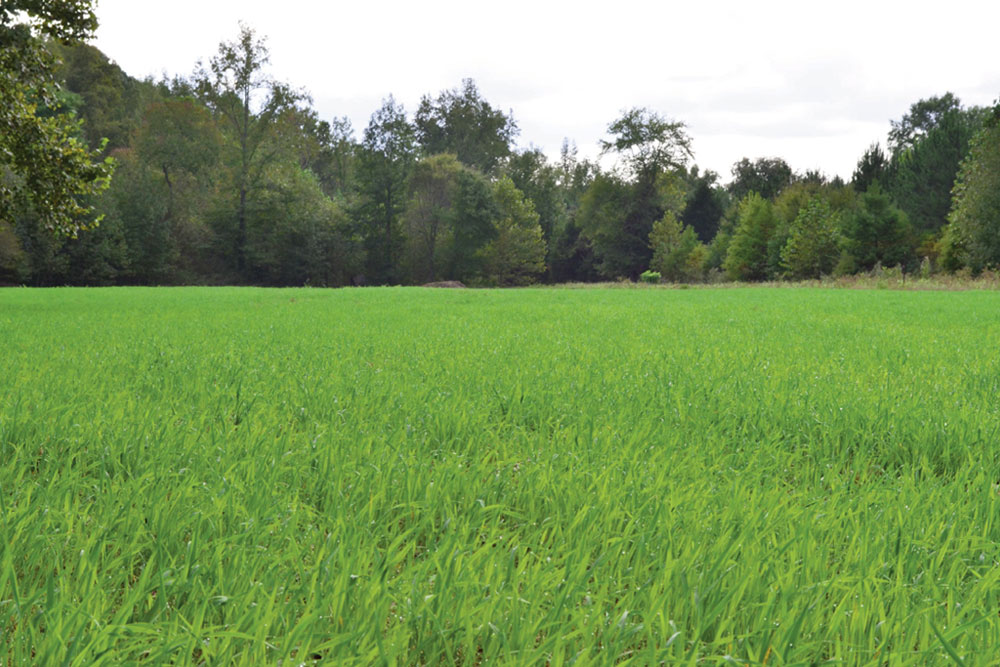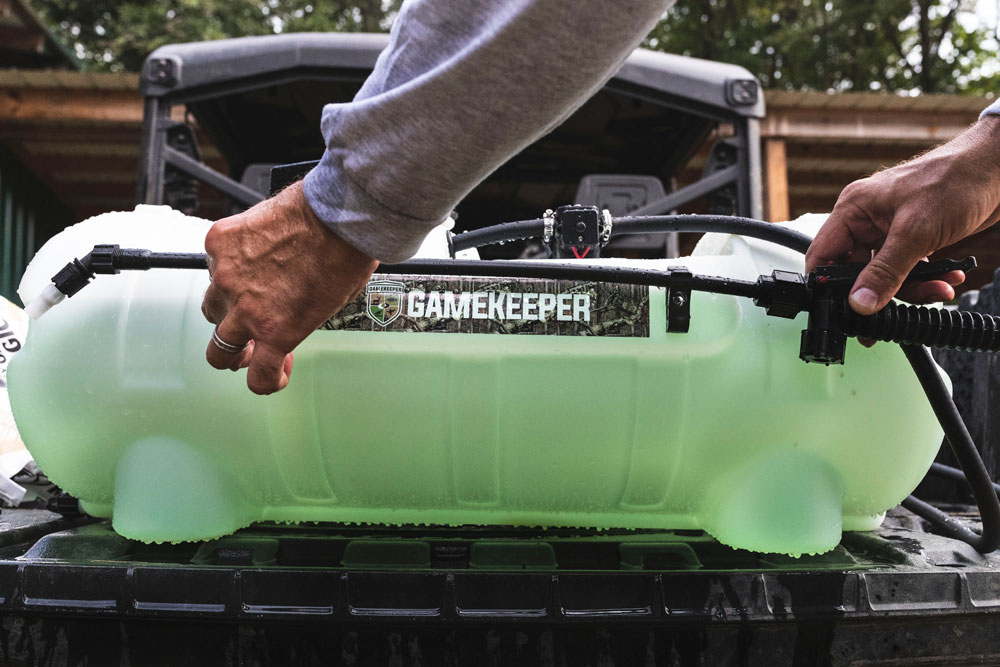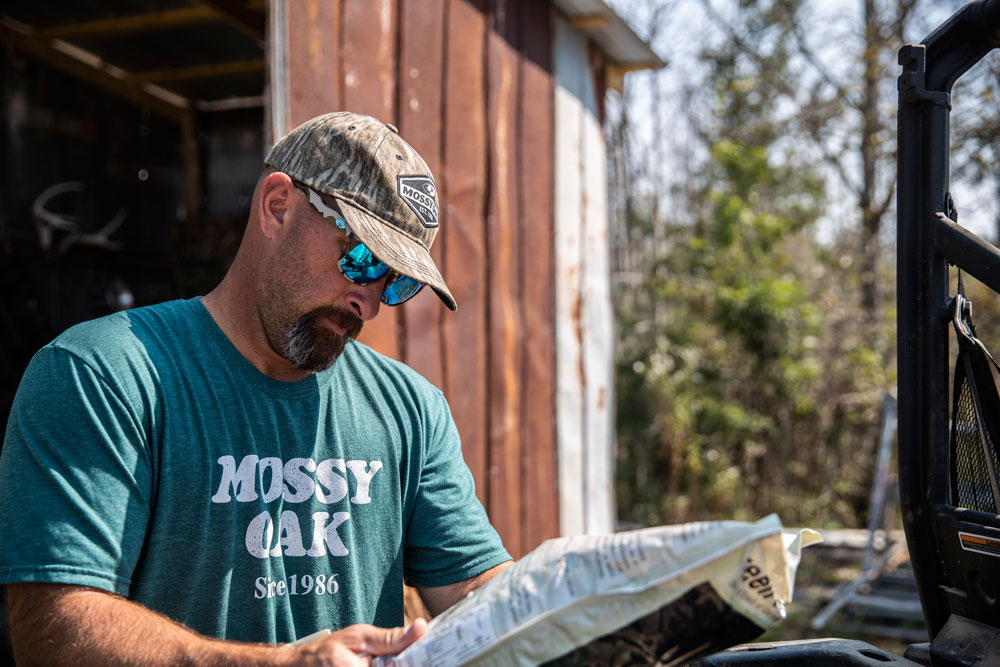While not a glamorous subject, fertilizers can significantly improve plant growth, allowing crops to grow more rapidly and produce greater yields. Soil is a natural source of nutrients, but not all soils provide sufficient nutrient density or variety to meet the needs of plants. If you think you have a green thumb, you should understand how plants use nutrients and what they need to grow.
If your interest is in planting plants for deer and other game animals to eat, a food plot fertilizer can ensure the deer find your most palatable offerings.

Understanding Nutrients
Fertilizers provide a variety of essential nutrients to plants to promote growth. While plants organically derive nutrients from the soil and air, human activities, such as industry and farming, can change the soil’s chemical makeup. If these alterations reduce the availability of specific nutrients to plants, it becomes necessary for the gardener or farmer to augment the plant’s supply.
Primary Nutrients
There are several nutrients that plants require to thrive. The first set of three are primary or essential because they are needed in more significant quantities.
Nitrogen (N)
Nitrogen is a naturally occurring chemical element found in the soil and the atmosphere. Critical to plant growth, nitrogen is one of the primary components comprising chlorophyll. Responsible for the green color of plants, chlorophyll is essential for photosynthesis, allowing plants to convert sunlight into energy.
Phosphorus (P)
As one of the primary nutrients, phosphorus fulfills multiple roles in plant growth, facilitating nutrient movement and contributing to photosynthesis.
Potassium (K)
Potassium is a macronutrient that plants need for various reasons, such as regulating the rate of photosynthesis by producing ATP (adenosine triphosphate). Potassium also plays a role in the plant’s ability to control the opening and closing of its stomata, the pore-like openings that facilitate gas exchange with the environment. As with ATP, potassium also affects the internal production of proteins and starches.
Secondary Plant Nutrients
Calcium (Ca)
Calcium is vital to support the walls between cells in plant structures.
Magnesium (Mg)
Magnesium, like nitrogen, plays a crucial role in the production of chlorophyll, which is necessary for photosynthesis. It also helps activate certain enzymes.
Sulfur (S)
Although secondary, sulfur plays a major role in several necessary plant-based functions, including the formation of chlorophyll and the development and activation of certain enzymes, and it is one of the components that form a protein.

Types of Fertilizers
There are two basic types of fertilizers to choose from: granular and water-soluble. Granular fertilizers break down more slowly, supplying nutrients to plants over a more gradual period — usually several months. Most organic fertilizers are granular.
You can expect organic fertilizers, such as composted manure, to provide sufficient secondary and micronutrients to meet your plant’s needs. Water-soluble fertilizers, however, deliver nutrients more rapidly at the expense of longevity. You’ll need to fertilize the soil more frequently to ensure the plants get what they need.
You’ll also need to know when to apply your fertilizer. Heavy rainfall can contribute to nutrient leaching, whereby dissolved nutrients in the soil move downward. Depending on the extent of the leaching, the nutrients may become lost and unavailable to the root system. If you apply granular fertilizers in the fall, the nutrients will be available to your plants the following spring.
Synthetic fertilizers, in contrast, can supply nutrients to plants almost immediately, which is also why you need to monitor the quantities that you apply carefully. It’s possible to deliver an excessively concentrated dose of nutrients to your plants.
While synthetic fertilizers efficiently deliver nutrients to plants, they don’t improve the soil. If you want to ensure long-term health and viability, using organic fertilizers is a good option.
How to Read Fertilizer Labels
Fertilizer labels have three numbers printed on them: first is nitrogen, second is phosphate and then potash. These correspond to the three primary nutrients — nitrogen, phosphorus and potassium. Each number represents a percentage. For example, a fertilizer label displaying “10-10-10” indicates that the product contains 10% nitrogen, 10% phosphate, and 10% potash.

Fertilizer Application
For the best results, you’ll need to distribute the fertilizer evenly across your plants. There are several methods for applying fertilizers to your plants.
Top Dressing
Top dressing is the application of synthetic fertilizers that act quickly. You’ll typically apply synthetic fertilizers using this method in the spring at the beginning of the growing season. Don’t let the product make contact with the plant’s leaves — the fertilizer can damage the delicate tissues. When using synthetic fertilizers, it’s also important that you do not saturate the soil — applying these fertilizers in excess risks damaging the root system or contaminating nearby groundwater.
Base Dressing
Before the growing season and during planting, you can apply compost and manure to help enrich the soil with vital nutrients, allowing them to accumulate.
Watering
You can dissolve fertilizers in water or use liquid fertilizers, spraying plants during the growing season to stimulate growth or compensate for nutrient deficiencies in the soil. Liquid fertilizers deliver nutrients immediately. As with top dressing, avoid spraying the fertilizer on the leaves.
Deer Season
In addition to feeding yourself and your neighbors, one of the reasons to fertilize plants and promote crop production is to produce deer food plots. During deer season, you can use strategically placed crops as forage to attract deer. If suitable forage is scarce elsewhere, nutrient- and calorie-dense plants can lure game exactly where you need it to be for a precise shot.
Start Growing
In addition to supplying your plants with the essential nutrients they need for photosynthesis and growth, you’ll also need to monitor the soil’s pH levels. pH, or potential hydrogen, refers to the extent to which the soil is acidic or alkaline. The pH level of the soil determines the availability of essential nutrients to the plant’s root system.
Most plant species prefer a pH level between 6.0 and 7.0. If your soil is more acidic or more alkaline than this, you’ll need to apply a pH-balanced fertilizer. If you must adjust the pH levels of your soil, you can use lime and wood ash to raise it and sulfur or aluminum sulfate to lower it.




























